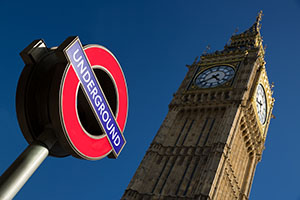On February 13th at 9.30AM the U.K. statistics agency the ONS, will publish the latest inflation figures for the U.K. economy. The inflation figures include the: CPI, RPI, core inflation, input, output and house price inflation. It’s the main CPI figures, both month on month and year on year, that’ll be closely watched by analysts and investors and the data could generate market reaction in the U.K. pound upon release, if the forecast is met.
The month on month inflation figure is forecast to fall to -0.6% in January, from a 0.4% level in December. The year on year figure is forecast to fall to 2.9% for January, from 3% in December. A fall into negative territory for the month of January, representing a full 1% swing from the positive 0.4% print for December, may take many investors (who fail to stay on top of upcoming fundamental analysis releases) by surprise given the Bank of England’s concerns regarding inflation, which they broadcast during their press conference as recently as last week.
The BoE cited short to medium term inflation fears, as justification for their hawkish narrative delivered last week, during their no change decision with regards to the U.K. base interest rate. Mark Carney delivered forward guidance suggesting that investors should prepare for a more aggressive interest rate policy during the coming years; rises would be higher and sooner. He refrained from delivering a time table, however, the general consensus appeared to be three rises of 0.25% before the end of 2019, taking the base rate to 1.25%. However, the caution and overriding justification for any future rises, could be the impact of the Brexit negotiations over the next six months, the Brexit impact from March 2019 onwards and the general performance of the U.K. economy during the time period.
The U.K. pound rose significantly after the BoE base rate decision and subsequent press conference; cable (GBP/USD) rose and EUR/GBP fell. However, the gains were short-lived as Brexit fears once again appeared, sterling retraced back to pre BoE announcement levels, versus its two main peer currencies. If the MoM forecast of a fall to -0.6% becomes fact, or a negative reading close to this figure is recorded, then the BoE forecasts and fears regarding inflation may prove to be premature, as such the pound may come under selling pressure, with investors deducing that inflationary concerns have been exaggerated.
KEY ECONOMIC METRICS FOR THE U.K. OF RELEVANCE TO THE RELEASE.
• GDP YoY 1.5%.
• GDP QoQ 0.5%.
• Interest rate 0.5%.
• Inflation rate 3.0%.
• Jobless rate 4.3%.
• Govt debt v GDP 89.3%.
• Services PMI 53.

